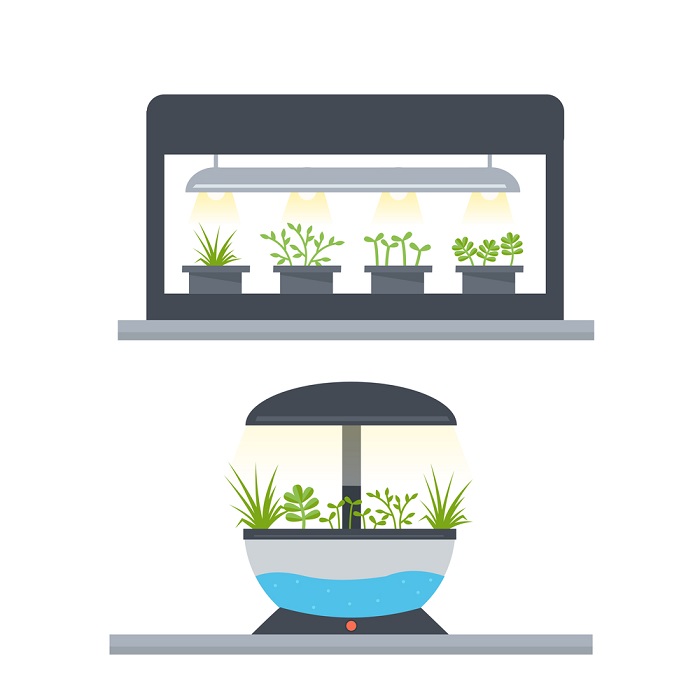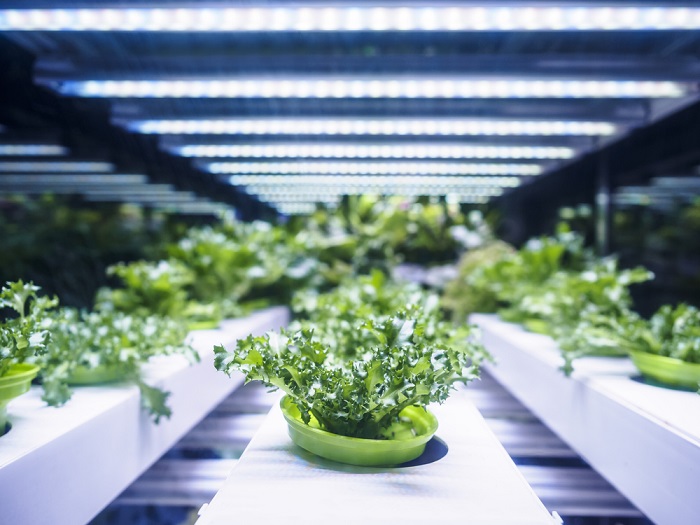 I am sure that we all love using many kinds of fresh herbs in meals, which we prepare for our families and ourselves as well. Adding herbs is a good way to add more zest and flavor to any dishes.
I am sure that we all love using many kinds of fresh herbs in meals, which we prepare for our families and ourselves as well. Adding herbs is a good way to add more zest and flavor to any dishes.
The hydroponic system is a good way to grow plants and herbs indoors. All you need to do is to grow the herbs in containers, which are filled with nutrients and water. Moreover, your hydroponic systems also need an air pump to allow for water oxygenating and circulating the root system of your herbs.
 What are requirements of growing herbs in hydroponics
What are requirements of growing herbs in hydroponics
pH level, humidity, temperature, nutrients, and light are what you should consider when growing herbs in hydroponics. When those factors are carefully controlled, the hydroponics will offer a superior growing medium and less time-consuming in comparison to the conventional soil.
Light
Your herbs require at least six hours of unobstructed sunlight and bright every day. In this case, you just need a south-facing window because it can provide enough lighting for your herbs. It is also recommended that you should rotate your plant so that all of its sides can receive sufficient coverage.
As many kinds of plants – consisting of herbs – thrive on ten to twelve hours of the sunlight every day, therefore, the grow light is highly recommended for additional supplementation, especially, in case your herbs do not receive enough sunlight to grow healthy.
Basic fluorescent lamps can be sufficient, their yield, however, is less efficient in comparison to the modern LED grow lights.
On the other hand, the HID lights (also known as high-intensity discharge light) are useful too. Especially, the metal halide HID light is extremely superior for your growing. As the grow lights, which have blue spectrum lighting, can encourage bushy, lush growth in many kinds of herbs (like basils). Therefore, it is also the best option for you when growing hydroponic herbs.
Nutrients
Because most of the herbs are still vegetative, thus, a great grow formula hydroponic nutrient along with high phosphorus and nitrogen ratio is such an ideal selection for growing herbs.
Growers can pick some suitable commercial nutrient solutions from this list or make your own solutions.
Here are some typical recipe combines:
- ½ teaspoon of copper sulfate and zinc sulfate to offer essential micronutrients.
- ½ pint each of manganese chloride, boric acid, and iron sulfate.
- 25 gallons of warm water including 1 ½ ounces of magnesium sulfate.
- 3 ounces of calcium nitrate
- 2 ounces of potassium nitrate
- ½ ounce of potassium phosphate
Since plants use up nutrient solutions over time, thus, you had better change solution for every 3 weeks to prevent accidental damage to your plants.
Temperature
I know that you may feel tired when hearing of this, however, you have to agree that temperature is critical in growing. Your hydroponic garden will not be successful without proper temperature range. It is such a crucial and fundamental element that you should not take for grant.
Moreover, you have to remember that the greatest optimal range of temperature in the daytime for herbs is from 65ºF to 70ºF. On the other hand, it is beneficial for your herbs if the night temperature drops about 10ºF to encourage outdoor conditions.
There’re two kinds of the vegetable crops, and each of them requires a different range of temperature
Herbs and warm season crops (herbs, melons, squash, beans, cucumbers, eggplants, peppers, tomatoes, etc.)
o Daytime: about 70ºF to 80ºF
o Nighttime: about 60ºF to 70ºF
o Absolute maximum temperature: 90ºF.
Cool-season crops (green onions, spinach, peas, endive, lettuces, cabbage, broccoli, etc.)
o Daytime: about 60ºF to 70ºF
o Nighttime: about 50ºF to 60ºF
o Absolute minimum temperature: 40ºF
Of course, you can mix cool and warm-season crops up, such as tomatoes with lettuce by compromising on the temperature. However, in general, you will have the most flourishing crop by growing seasonal crops together. Just keep in mind this temperature range, and it will help you a lot!
Humidity
If you used to visit a greenhouse and think that a high level of humidity is ideal for growing herbs in hydroponics, then I have to tell you that what you might think is not true! Actually, high humidity makes it difficult for herbs to breath and affects its pollination. Moreover, a high level of humidity is also the cause of breeding ground for mildew and nasty mold.
Ideally, the most favorable humidity for your herbs is 50%. However, anywhere between 40% and 80% is okay too.
A great method to deal with temperature and humidity levels is to pick up a good combination hygrometer/thermometer, which displays both levels of humidity and temperature. Especially, there
are some, which can show the low and high reading in a period of 24 hours so that you can keep track of the ranges every day.
pH levels
An ideal pH level is important to high yields and healthy plants in both hydroponics and soil gardening.
Naturally, the pH levels of soil, which ranges from neutral (7) to slightly acid (6), is good enough for plants and herbs grown outdoor. On the contrary, hydroponics lets growers pinpoint pH reading to create the best condition and maintain it. Thanks to this, your plants will be more productive and healthier as well as avoid wasting valuable nutrient solutions.
Most herbs need a slighter level of pH when they are grown in hydroponics in comparison to that recommended level for the soil growing. For instance, tomatoes require a high pH (7) when grown on the ground while hydroponic tomatoes do well in a more acid condition, at a pH of (6) or (6.5).
Another example is that cabbages are okay in the alkaline soil with such a high level of pH (7.5) while hydroponic cabbages grow best in a slightly acid pH level (6.5) to a neutral one (7).
You had better research the ideal level of pH for your hydroponic herbs carefully.
Summary of hydroponic gardening
A garden of hydroponic herbs is a useful and quick solution to growing the culinary herbs. Nowadays, the system of indoor hydroponic has become more and more popular, thanks to the excellent abilities of many easy-to-use kits. Do not hesitate to grow herbs in hydroponics and begin to enjoy your first harvests!
When you are ready to begin growing, just choose a suitable hydroponic grow kit and plant your favorite herbs!
Author Bio:
Leslie J. Shearer is the founder and owner of the blog colorgardening.com. Gardening is her passion and she has a deep relationship with nature. Growing plants and digging deep to germinate flowers and vegetables brings positivity in her life.





